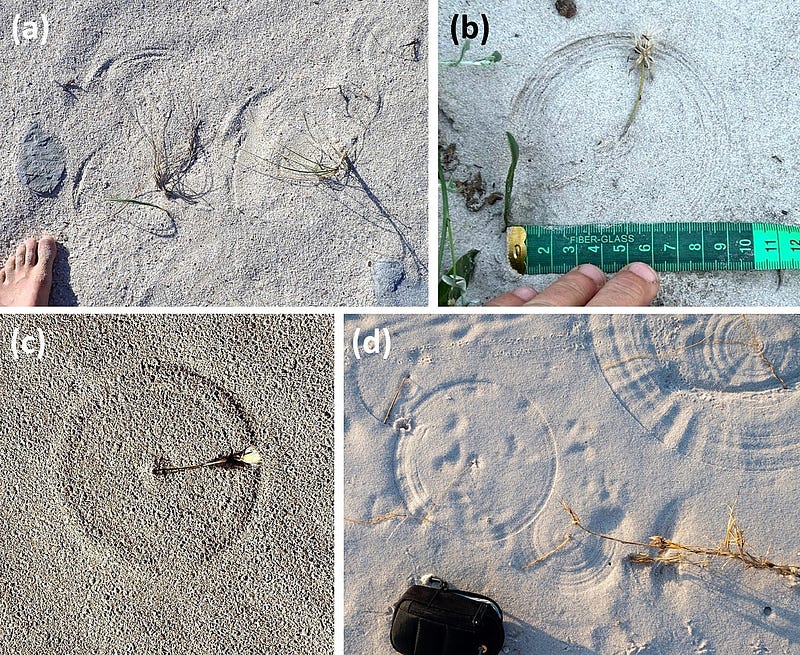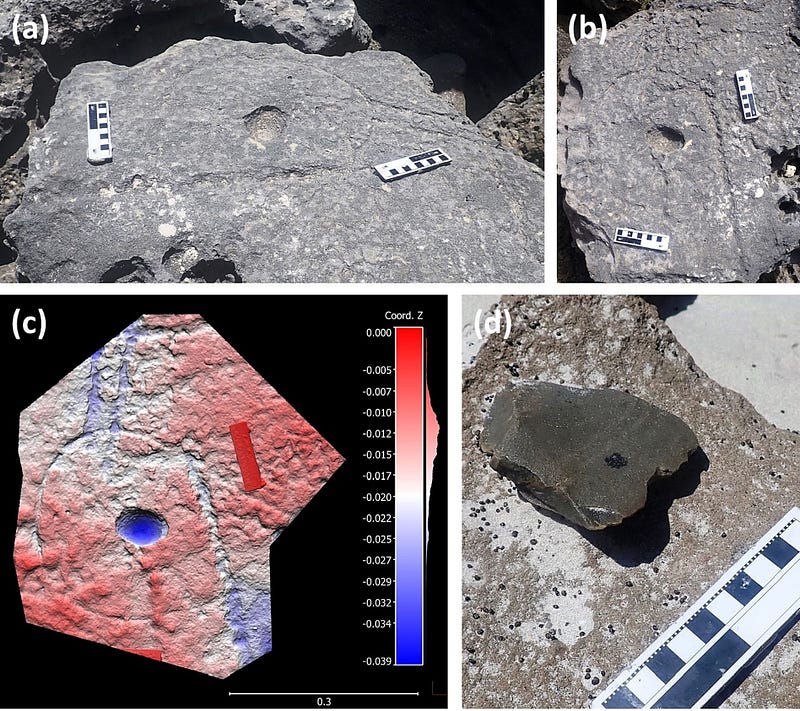# Prehistoric Artistic Expressions: Unraveling Ancient Circles
Written on
Chapter 1: The Discovery of Ancient Circles
In South Africa, researchers have uncovered intriguing “fossil” circles in the sands, suggesting they might represent early artistic expressions of our ancestors. While these formations could occur naturally due to wind conditions, particularly when an object’s end turns passively on sediment, their implications for human creativity are profound.
The first accounts of these circles date back to 1886, but substantial advancements in understanding them have emerged only recently, particularly between 2018 and 2024. These circles, dating from approximately 600 million to 60 million years ago, were found on surfaces dating back to the Pliocene and Pleistocene eras. However, initial assessments indicate that the circles or scratches themselves are around 100,000 years old.
Despite their artistic potential, not all of these circles can be attributed to human activity. Some formations have been linked to plant life, alongside various marks on rock surfaces and walls.
Section 1.1: Interpreting the Origins of the Circles
There are two leading theories regarding these circular structures. One theory suggests that plants may have formed some circles, while another proposes that ancient hominins left their marks on eolianite, a type of rock shaped by wind-deposited sediments.
Researchers speculate that these early humans might have been inspired by the natural circular patterns created by plants, possibly attempting to replicate them in the sand. This could represent some of the earliest instances of paleoart, where ancient humans engaged in primitive artistic expression.
Chapter 2: The Artistic Landscape of the Southern Cape
The southern Cape coast is known for its rich prehistoric artistic heritage, including renowned sites like Blombos Cave. The oldest known ammoglyph, estimated to be about 139,000 years old, was identified using Optically Stimulated Luminescence (OSL) techniques.
It appears that these early artists utilized sand as a rudimentary “proto-canvas,” opting for this medium over more complex cave paintings. They likely employed natural materials such as rock fragments, shells, and bones, similar to how children play with items found on the beach.
Section 2.1: Evidence of Early Artistic Techniques
Various scratch circles and arcs on modern dune surfaces have been documented along South Africa’s coast. These patterns, attributed to different plant species, provide insights into the artistic techniques that may have been utilized by early humans.
This suggests that ancient humans were observant of their surroundings and drew inspiration from nature, illustrating an early form of biomimicry. It is plausible that these ancestors noticed the circular shapes created by plants and sought to replicate them in their sandy environment.

By anchoring one end of a forked stick in the sand and rotating the other, they could create circular shapes. Alternatively, kneeling and using their elbow to shape the sand resulted in imperfect circles, revealing the limitations of their techniques.
Section 2.2: Artistic Imitation and Its Significance
The patterns formed by plants were often more symmetrical than those created by humans, yet the stick technique enabled ancient artists to approximate natural forms. The structure of the De Hoop ammoglyph suggests it could have been made by a child or smaller adult, emphasizing the simplicity of these early artistic endeavors.
Although these creations may not seem remarkable, they could have laid the groundwork for the techniques used in future cave paintings, illustrating that imitation plays a crucial role in the evolution of artistic expression.

In summary, the act of imitation stands as a fundamental precursor to art, shaping its development over the ages.
Published in Fossils et al. Follow to learn more about Paleontology and Evolution.